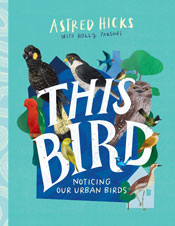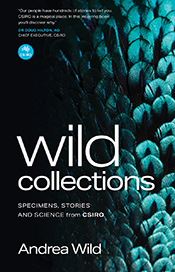Wildlife on Farms
How to Conserve Native Animals
By: David Lindenmayer, Andrew Claridge, Donna Hazell, Damian Michael, Mason Crane, Christopher MacGregor, Ross CunninghamLearn how wildlife conservation can be integrated with farm management and the benefits this can bring.
Many landowners are interested in the native animals that live on their farms or once occurred there. In particular they want to know why particular species are present (or absent), what they can do to encourage them to visit, and what they might do to keep them there. + Full description
Wildlife on Farms outlines the key features of animal habitats—large flowering trees, hollow trees, ground cover, understorey vegetation, dams and watercourses—and describes why landholders should conserve these habitats to encourage wildlife on their farms. It shows how wildlife conservation can be integrated with farm management and the benefits this can bring.
The book presents 29 example species—mammals, birds, reptiles and amphibians—that are common to a large part of southern and eastern Australia. Each entry gives the distinguishing features of the animal, key features of its required habitat, and what can be done on a farm to better conserve the species.
- Short descriptionNews
No longer available in a print edition.
Reviews
"This is quite an incredible little book loaded with accurate information. . . This book is fabulously concise and cleverly set out. . . The high quality colour photographs make it very clear what you're looking for. All very empowering and positive, and very practical. . . a much needed publication - every farmer and landholder should have one. It would also make a fantastic teaching tool for Landcare groups and schools."
Earth Garden March-May 2004
"All in all, Wildlife on Farms is far and away one of the best and simplest guides for landholders wanting to help turn Australia's extinction crisis around."
Corey Watts, Australian Conservation Foundation (Habitat Australia, August 2003)
". . . some ecologists who created this CSIRO book have kept it realistic. . . crammed with practical suggestions for the thoughtful farmer wanting to know why all his small birds and frogs have gone."
Tim Low (Nature Australia, Spring 2003)
"This beautifully presented book describes why conserving wildlife is important for farming. . . Wildlife on Farms is highly recommended."
Patrick Francis (Australian Landcare, December 2003)
"I highly recommend this book as a positive step in assisting landholders and the whole community to understand the complexity of natural processes."
Bev Smiles (National Parks Journal, June 2003)
Details
ePDF | March 2003ISBN: 9780643069848
Publisher: CSIRO Publishing
Available from eRetailers
ePUB | March 2003
ISBN: 9780643099845
Publisher: CSIRO Publishing
Available from eRetailers
Features
- Practical information on conserving and reintroducing wildlife
- Includes habitat details and full colour photographs of mammals, birds, reptiles and amphibians
- Explains the benefits of wildlife on rural properties
Contents
Preface
What is wildlife habitat?
Habitat 1: Trees habitats on farms
Habitat 2: Understorey trees and shrubs
Habitat 3: Logs, rocks and ground cover
Habitat 4: Creeks, wetlands and dams
Integrating farm management and wildlife conservation
Animals and the habitats they need:
Trees
Understorey trees and shrubs
Logs, rocks and ground cover
Creeks, wetlands and dams
Glossary
General reading
Scientific literature
Common and scientific names
View complete table of contents of Wildlife on Farms (PDF)
Authors
Wildlife on Farms has been written after a seven-year study of biodiversity conservation in agricultural/grazing landscapes in south-eastern Australia.
The authors David Lindenmayer, Donna Hazell, Damian Michael, Mason Crane and Christopher MacGregor are ecologists working at the Centre for Resource and Environmental Studies (CRES), The Australian National University in Canberra. Ross Cunningham is a statistician at CRES. Andrew Claridge formerly worked at CRES and is now a threatened species biologist with the New South Wales National Parks and Wildlife Service.








